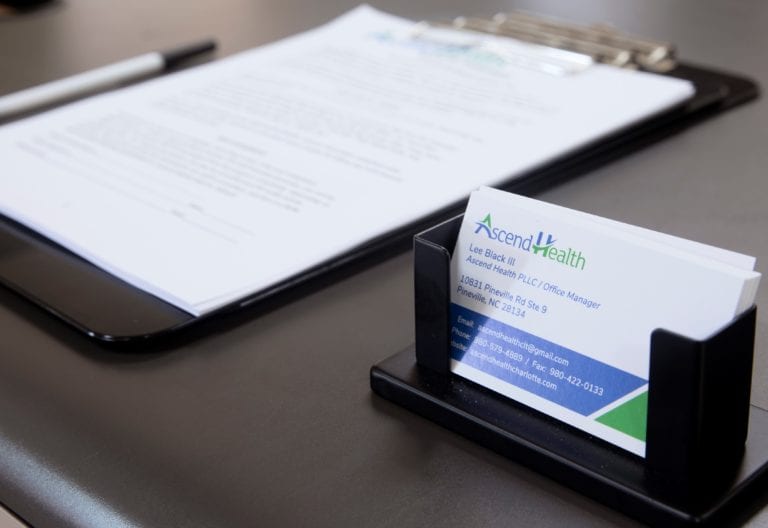Opioid addiction is a serious problem in the United States. It’s estimated that over 2 million people suffer from opioid abuse or dependence, and according to the National Institute on Drug Abuse, overdose deaths involving prescription opioids have quadrupled since 1999.
This is a problem that affects everyone—not just the addicts themselves. Families of addicts are often torn apart by this disease, and many loved ones are left struggling with their own guilt and grief after losing someone they care about so much.
The good news is that there are ways to prevent an opioid overdose—and knowing how can help save lives! In this guide, we’ll go over some of the most effective ways to prevent an opioid overdose, so you can keep your loved ones safe from harm.
From better understanding the signs of an opioid overdose to knowing how to administer naloxone, this guide will help you get the information you need to protect your family.
1) Look For Warning Signs That Someone Is Overdosing or Is at Risk of Overdosing
When you’re helping an individual with opioid addiction, it’s important to be aware of the warning signs that they could be overdosing. If you notice these signs, it’s time to get them help immediately.
The most common warning sign is confusion or difficulty speaking clearly. Opioids slow down mental and physical activity, so it can be hard for someone under their influence to communicate clearly. If someone seems confused or gives unclear answers, that’s a sign that they may need medical attention.
Other warning signs include slurred speech, increased heart rate, pinpoint pupils, and extreme drowsiness. A person who takes too much of an opioid may also vomit or lose consciousness (or both). In some cases—depending on the type of opioid taken and how much was taken—a person might also have trouble breathing or experience seizures.
2) Get Rid of Any Leftover Prescription Medicines
It’s important to stay safe and getting rid of any leftover prescription medicines is one way to do that. If you’re worried about a loved one who keeps taking opioids, it’s important to look out for their safety.
If you find any leftover prescription medications in your home, get rid of them! It might seem like a good idea to just hide them somewhere in the house, but this could be incredibly dangerous. If your loved one is addicted to opioids and they know that there are still some unused pills lying around, they could easily take them without your knowledge and overdose.
You can also ask your pharmacist if they can dispose of any leftover medication for you; this will ensure that no one else can access it either. You should always try to keep all medications out of reach from anyone else in your home who might use them inappropriately—especially if they’re addicted to opioids!
3) Keep Naloxone on Hand
Naloxone is a medication that can reverse the effects of an opioid overdose. It works by blocking the effects of opioids on the brain, allowing a person who has overdosed to start breathing again. The whole working mechanism of naloxone is to prevent the brain from receiving any signals from opioids, which are responsible for the respiratory depression and sedation seen in overdose. By attaching itself to the same receptors in the brain as opioids, naloxone can temporarily remove those receptors from being activated by any opioids in your system. This prevents the depressant effects of opioid drugs from occurring, which allows you to breathe normally again.
That’s why it’s important to keep naloxone on hand if you have someone in your life who is at risk of overdosing on opioids. Naloxone is available in two forms: a nasal spray and an injectable form. Both forms are easy to use and can be administered by anyone, even if they have no medical training.
If you suspect that someone is overdosing on opioids, the first thing you should do is call 911. While you’re waiting for the ambulance to arrive, you can use naloxone to try to reverse the overdose. The nasal spray is easy to use—just follow the instructions on the package and spray it into the person’s nostrils. If you’re using the injectable form, you’ll need to use the syringe to inject the naloxone into the person’s thigh muscle.
4) Avoid Mixing Prescription Medications & Stick to Your Medications
If you’re taking medication for a mental health issue like depression or anxiety, you should also be aware that mixing that medication with other medications can be dangerous. You should avoid mixing it with other types of drugs, including opioids.
And while this sounds like common sense, it’s not always so easy to do in practice. For example, if your doctor prescribed both antidepressants and opioids for pain management and you find yourself needing additional pain relief after an extended period of time on just one of those medications, it could be tempting to increase your dosage rather than switching over to another drug entirely. However, doing so may cause significant side effects or even overdose.
In addition to keeping track of what medications you take at any given time (and how much), it’s important to stick with the dose prescribed by your doctor—even if that means taking less than what feels necessary at first glance (or even second).
5) Be Supportive and Encourage Seeking Help
If you have a loved one who is struggling with opioid addiction, it’s important to be supportive and encourage them to seek help. Addiction is a disease, and it’s not something that someone can just “snap out of.” It takes time, effort, and support to overcome it.
Be there for your loved one and let them know that you care about their well-being and want to help them get better. Encourage them to seek treatment and be supportive of their recovery journey. It’s also a good idea to seek support for yourself, as caring for someone with an addiction can be emotionally and physically exhausting.
In conclusion, preventing an opioid overdose is possible by staying alert for warning signs, getting rid of leftover prescription medications, keeping naloxone on hand, seeking help for opioid addiction, and being supportive of your loved one’s recovery journey. By following these steps, you can help keep your loved ones safe and on the path to recovery.
The Conclusion
The opioid crisis is a real and growing problem in the United States. Knowing how to prevent an opioid overdose is an important part of keeping your loved ones safe. From understanding the warning signs to keeping naloxone on hand, this guide has provided you with the information you need to help keep your family safe. Hopefully, this guide has given you a better understanding of the steps you can take to prevent an opioid overdose and keep your loved ones safe.
If you or a loved one are suffering from addiction or substance abuse, please contact us today. We are here to help you along the way, and throughout your road to recovery.



